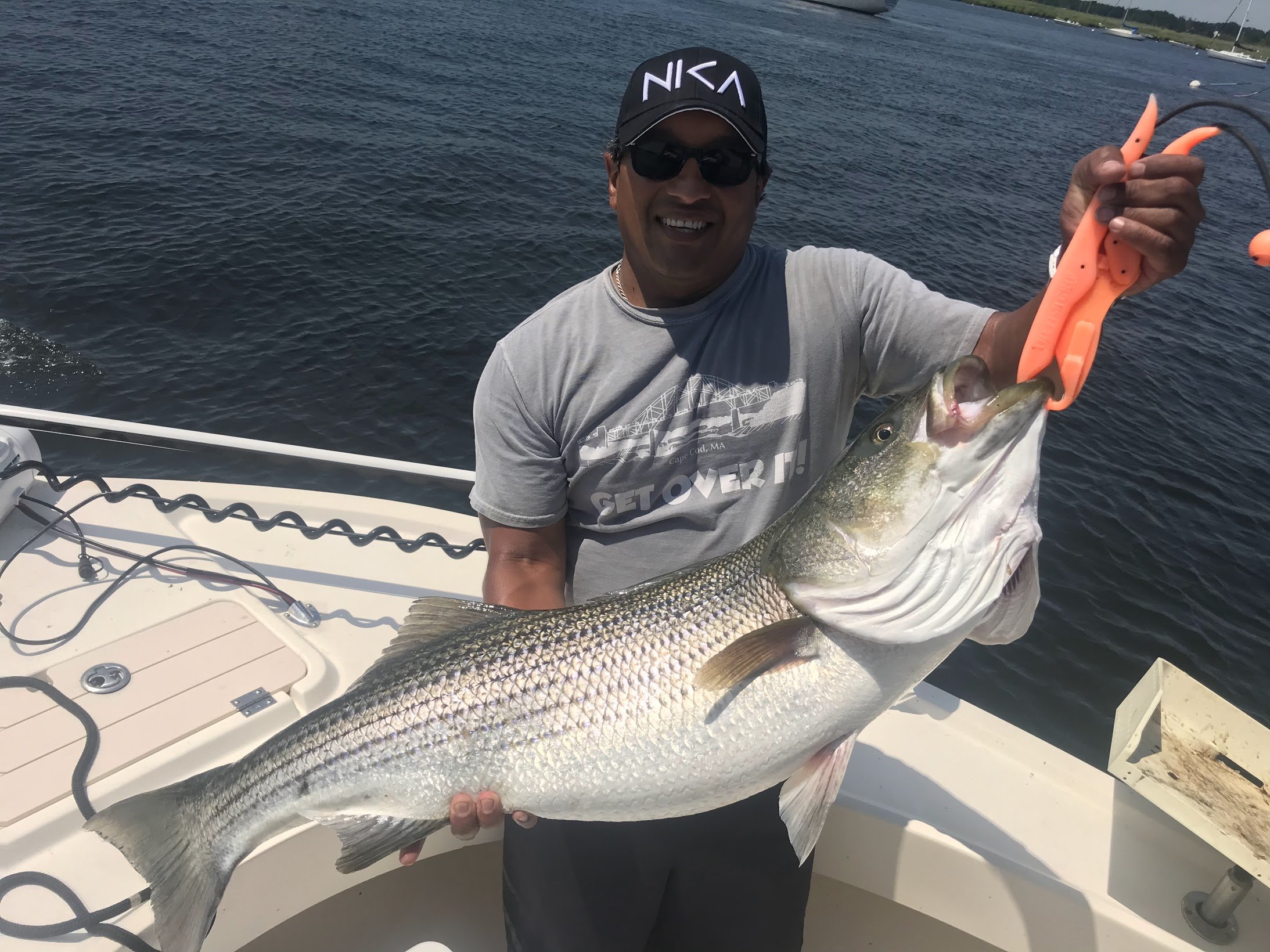How To: Spool Reels Perfectly
Springtime is just around the corner. I know that I'm geeking out, preparing all my gear for the upcoming season to ensure it is in tip-top shape. One of the checklist items is re-spooling my reels with fresh line. If you read "Drifting the Mouth Part II," I mentioned that I spool my conventional striper reels differently than most. I use a mix of both braid and monofilament when spooling my reels. Today, I will show you how to accurately calculate how much mainline and backing you need to fill your reels with for the perfect ratio. These equations work for any reel or any line. You can use these same principles to spool everything from a trout reel to a tuna reel. I will use my Seigler SG intended for striped bass fishing as an example.
I prefer to fish 40# braid as my mainline for my striped bass conventional reels. If I filled up my entire spool with just 40# braid, I would have 500 yards of line, which is excessive and expensive. Plus, you can guarantee you will never even see the last 250 yards of line, so it ends up being a waste. The solution to end the waste and save some money is to use a "backing" of less expensive mono to fill up some of that space at the bottom of the spool. Then, connect the mono to a spool of braid and add your "topshot," which is your main fishing line. (The process is reversed in some instances like tuna fishing, where you want a lot of braid for backing and capacity and mono on top for stretch and abrasion resistance.) When filling up a reel this way, the tricky part is getting the ratio of how much of which line to set you up for success. So we must turn to The Capacity Equation to find out exactly how much backing we need to fill the reel.
Before beginning with the Capacity Equation, you will need to find a few numbers from the reel and line manufacturers. You will need the following information:
Reel Line / Capacity
Diameter of Mainline / Amount of Line Wanted
Diameter of Backing
So for my example of what I am using, here at my stats:
Seigler SG holds 450 yards of 50# Braid
I am using 40# braid for my mainline and want 250 yards
I will use 25# mono for my backing, and I need to find out how much I need to put on the reel.
The Capacity Equation
We will use the reel manufacturer's capacity stats to generate our "Capacity Number." Seigler states that its SG reel can hold 500 yards of 50# braid. A quick google search shows me the average 50# braid has a diameter of 0.36 mm. So my Capacity Number is 0.36 x 500, which equals 180.
Step I: Capacity Number = Diameter of Line x Number of Yards the reel can hold
Capacity Number for Seigler SG = 0.36 x 500 = 180.
So the total number the reel can hold is 180 units. Now, we will take the capacity of the entire reel and subtract the capacity number of my braid topshot. This equation will yield our “Mono Capacity Number” Another quick internet search reveals that 40# braid is 0.32 mm. I have decided that I want 250 yards of braid on my reel. So my equation becomes:
Step 2: Capacity Number of Mono = Capacity Number - (braid diameter x yardage wanted)
Seigler Example = 180 - (0.32 x 250) = 100
Now that I have a capacity number left over for my mono backing, I just have to take that number and divide it by the diameter of the mono to get the number of yards I need to add to get a full spool. Another quick google search shows that the 25# mono I am using for backing has a diameter of 0.46. It's crucial to ensure your line diameters are in the same units. Some manufacturers give you the diameter in mm and others in inches. Make sure you convert both types of lines to the same units. If the units are the same, this equation will work either way.
Step 3: Mono Backing Yardage = Capacity Number of Mono / Diameter of Mono
Seigler Example = 100 / 0.46 = 217 Yards of Mono.
Now that I have my info, I know I need 217 yards of 25# mono and 250 yards of 40# braid. I under-spool my reels to avoid tangles, backlashes, and binding, so I will only fill up with about 190 yards of mono to give myself some space.
I usually have one of our great local shops fill my reels up using their line spooler. I drop off my reels with a note with exactly how much backing and how much braid I want on them. If I were spooling my reels at home, I would invest in a cheap line counter like this Berkely Line Counter. Since I have to spool up at least 30 different sets of rods, I find it much easier to have the bait shop do it for me!
So again, the Capacity Equation is as follows:.
Step 1 - Reel Capacity Number (Using numbers from the reel stats) = line diameter x capacity.
Step 2 - Backing Capacity Number = Reel Capacity Number - (Diameter of Mainline x Amount of Mainline you want to use)
Step 3 - Backing Amount = Capacity Number / Diameter of Backing.
I hope this was helpful as you plan out spooling your reels for this upcoming season!

